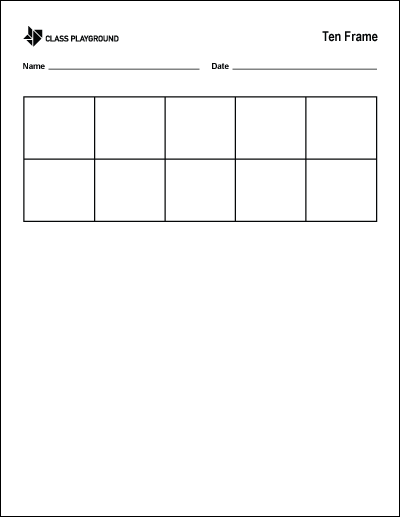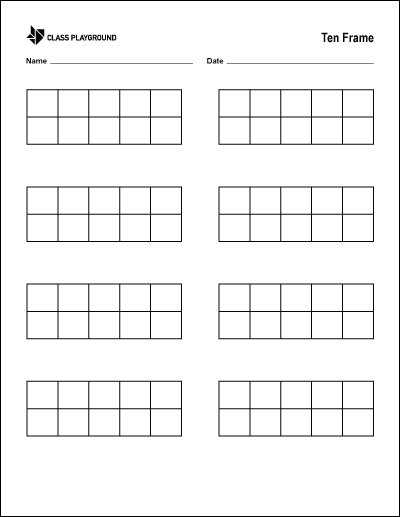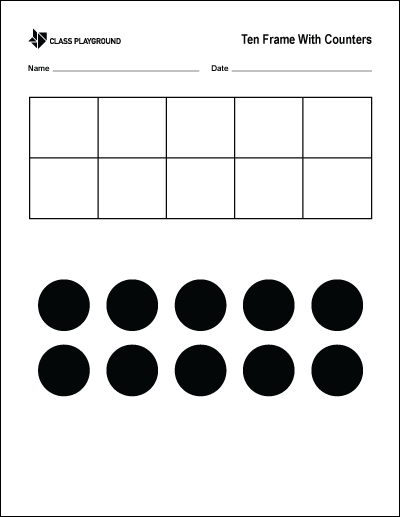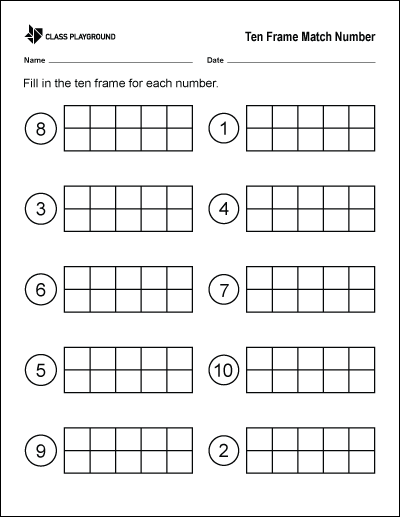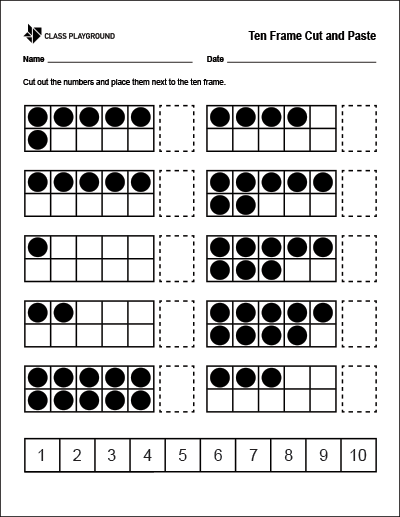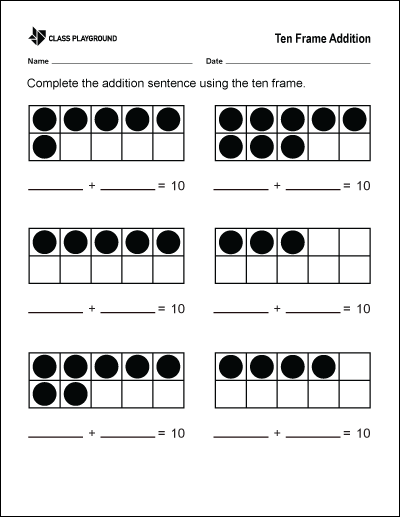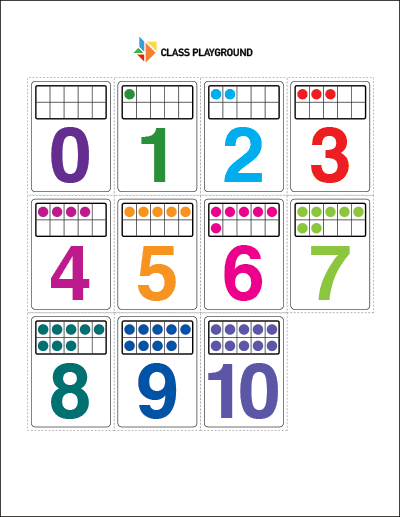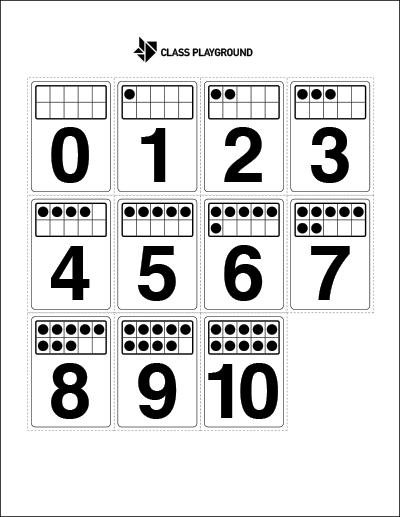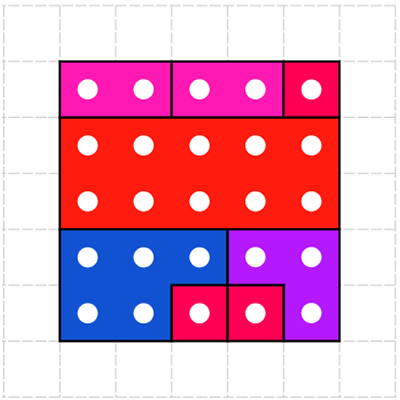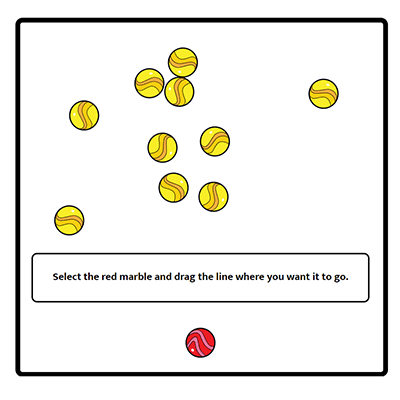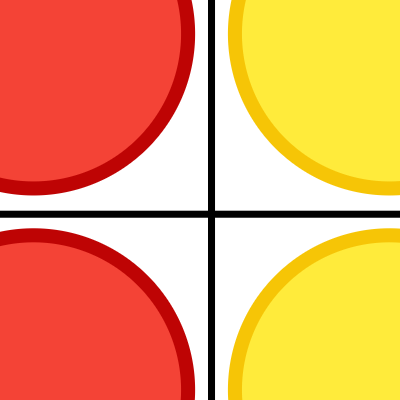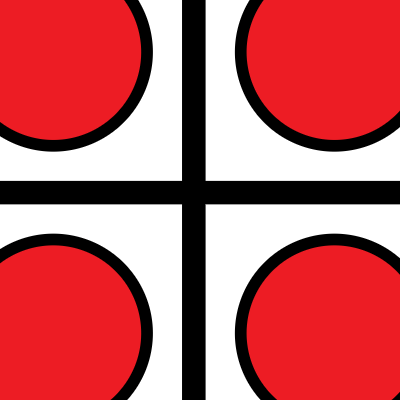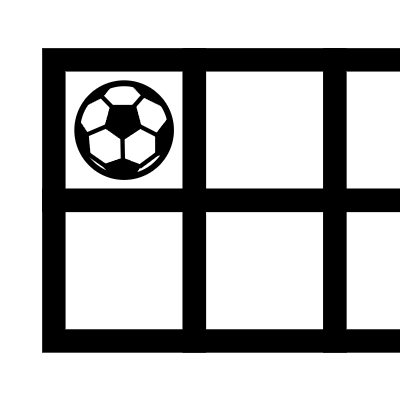What are Ten Frames?
A ten frame is made up of ten boxes arranged into two rows of five columns. Each box can be filled with a counter or left blank, allowing the representation of numbers up to ten. The concept of ten frames is rooted in the idea of benchmark numbers, specifically five and ten. By arranging counters in various configurations, students can form mental images of numbers. The ultimate goal is for students to develop automaticity, enabling them to recognize the number of counters without having to count them individually.
Why Use Ten Frames in the Elementary Classroom?
Ten frames are not only easy and cost-effective to implement into math instruction but also highly effective. They offer hands-on manipulatives that visually represent numbers less than, equal to, or more than ten. The concept of ten is fundamental to understanding place value, a critical skill in fostering a robust comprehension of number sense. It’s essential that students understand what a number consists of, rather than merely identifying a number as a digit.
Strategies for Using Ten Frames
The successful integration of ten frames into your classroom revolves around a few key strategies:
- Consistent Use: Regularly incorporating ten frames into your daily math lessons is crucial for students to become comfortable with them. This usage can be as simple as starting each math lesson with a quick ten frame activity or using ten frames during independent work time. The more they are exposed to and use ten frames, the more instinctive their understanding will become.
- Modeling: Before you expect students to use ten frames independently, it’s essential to model how to use them. Start by demonstrating how to represent different numbers on the ten frame. Then, show them how to use ten frames for addition and subtraction. For example, if you are teaching the concept of “4 + 3”, start with four counters on the ten frame, then add three more and count the total. Modeling these processes helps students understand how to use ten frames for mathematical operations.
- Differentiate Instruction: Ten frames can be a versatile tool for differentiating instruction to meet diverse learning needs. For students who find certain numerical concepts challenging, ten frames can simplify complex ideas into manageable parts. You can use a single ten frame to help these students master numbers up to ten. For more advanced students, introduce double ten frames or multiple ten frames to represent and work with larger numbers. This differentiation allows students to work at their own pace and ability level, fostering a more inclusive learning environment.
- Interactive Learning: Ten frames can also be used to promote interactive learning. Encourage students to explain their thinking while using ten frames. For instance, ask them why they placed counters in a particular arrangement or how they used the ten frame to solve a problem. This strategy promotes mathematical discourse, enhances students’ communication skills, and deepens their understanding of numerical concepts.
- Integration with Other Learning Areas: Don’t limit the use of ten frames to math lessons. Integrate them into other learning areas. For example, in a science lesson about seasons, use ten frames to count and represent the number of months in each season. In a language arts lesson, use them to count syllables in words. This cross-curricular integration reinforces students’ understanding of ten frames and their applicability across different contexts.
Activities for Using Ten Frames
Ten frame activities can make the learning process interactive and enjoyable:
- Flash and Tell: This activity is designed to improve students’ subitizing skills – their ability to quickly identify the number of objects in a small group without counting. To conduct this activity, prepare a ten frame with a specific number of counters. Show it to the students for a few seconds and then hide it. Ask students to recall the number of counters they saw and describe how they visualized them. For instance, if there were six counters, did they see two rows of three? Or perhaps five counters in one row and one in the other? Repeating this activity with different numbers of counters can help students develop a range of mental images for numbers.
- Ten Frame Memory Game: This game requires a set of ten frame cards and corresponding number cards. To prepare, create pairs of cards: one card showing a number as a numeral (e.g., “4”) and another showing that number on a ten frame. Spread all the cards face down. Students take turns flipping two cards at a time, trying to find a match between the numeral and the ten frame representation. When a match is found, the student keeps the pair of cards. The student with the most pairs at the end of the game wins. This activity reinforces number recognition and the visual representation of numbers.
- Addition and Subtraction Stories: This activity uses ten frames to visualize addition and subtraction word problems. First, present a word problem to the students. For example, “Billy has 7 apples. He eats 2. How many does he have left?” Then, use counters on a ten frame to represent the problem. Start with 7 counters, remove 2, and ask students to count how many are left. This activity helps students understand the process of addition and subtraction in a concrete, visual way.
- Fill the Frame: In this activity, give each student a blank ten frame and a set of counters. Call out a number and ask students to represent that number on their ten frame using the counters. For early learners, start with numbers less than or equal to 10. For more advanced students, introduce larger numbers and use multiple ten frames. This activity can be made competitive by timing it and seeing who can fill their frame correctly the fastest. It helps students practice number representation and reinforces the concept of ten as a benchmark number.

